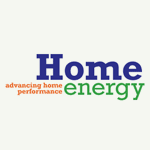Dry-cleaning chemicals are often intolerable to chemically sensitive people and to some allergic and asthmatic people. Actually, the term dry-cleaning is a bit of a misnomer. The process is called dry only because water isn’t used. Instead, a liquid petroleum-based solvent is the primary cleaning solution. (Sometimes special soaps and detergents are used along with the solvent.)
We do not strictly control Google ad content. If you believe any Google ad is inappropriate, please email us directly here.
Professional dry cleaning has been around for about a century and a half. It began in France when kerosene and turpentine were used to cut grease stains and clean clothes. Since that time, carbon tetrachloride, benzene, benzol, naphtha, and even gasoline have been used as dry-cleaning solvents. However, the dangers of fire and explosion from these fluids were so great that less-combustible chlorinated hydrocarbon solvents began to replace them during the 1930s. One of those, perchloroethylene (perc) is the most common dry-cleaning solvent used today.
Interestingly, perc was first created to be a metal degreaser, not a garment cleaner. And, although it certainly is less dangerous and explosive than gasoline-like solvents, it is not a benign cleaning agent by any means. In fact, the EPA (Environmental Protection Agency) has classified it as a hazardous air contaminant. Other agencies have labeled it a likely
carcinogen. Over the years, researchers working in animal studies have reported a host of adverse symptoms in test subjects exposed to perc—in nervous systems, kidneys, livers, generative organs, and other body tissues.
Obviously, humans working directly with perc are likely to be the most adversely affected by this potentially dangerous solvent. However, when dry-cleaned clothing is brought home, solvent residues will likely remain on the fabric fibers. In many cases, these will emit solvent odors which can be dangerous to breathe, even for the healthiest of individuals. Therefore, if you have a garment that’s just been dry cleaned, be sure to remove it from its protective plastic bag and hang it outdoors as soon as you can. You’ll need to air it out at least several hours, or until most of the characteristic dry-cleaning odor has dissipated. (Note: Some very sensitive people may always sense the presence of dry-cleaning chemicals, no matter how long a garment has aired.)
You should be aware that, as a service to their customers, some dry cleaners routinely add mothproofing chemicals to all wool items. To avoid these potentially bothersome chemicals, you’ll want to specify clearly that you don’t want your wool items treated against moths.
Recently, home dry-cleaning products (usually scented ones) have become available. However, these products are rarely tolerated well by sensitive individuals. Furthermore, it seems their capacity to clean satisfactorily is still rather debatable. When confronted, manufacturers have stated their products are only designed to remove some small stains, or to “freshen” a tie or blouse. However, many customers expect these products to replace professional dry-cleaning—as the advertising may seem to imply. The truth is, in most cases, they can’t and won’t.
HHI Error Correction Policy
HHI is committed to accuracy of content and correcting information that is incomplete or inaccurate. With our broad scope of coverage of healthful indoor environments, and desire to rapidly publish info to benefit the community, mistakes are inevitable. HHI has established an error correction policy to welcome corrections or enhancements to our information. Please help us improve the quality of our content by contacting allen@healthyhouseinstitute.com with corrections or suggestions for improvement. Each contact will receive a respectful reply.
The Healthy House Institute (HHI), a for-profit educational LLC, provides the information on HealthyHouseInstitute.com as a free service to the public. The intent is to disseminate accurate, verified and science-based information on creating healthy home environments.
While an effort is made to ensure the quality of the content and credibility of sources listed on this site, HHI provides no warranty - expressed or implied - and assumes no legal liability for the accuracy, completeness, or usefulness of any information, product or process disclosed on or in conjunction with the site. The views and opinions of the authors or originators expressed herein do not necessarily state or reflect those of HHI: its principals, executives, Board members, advisors or affiliates.








